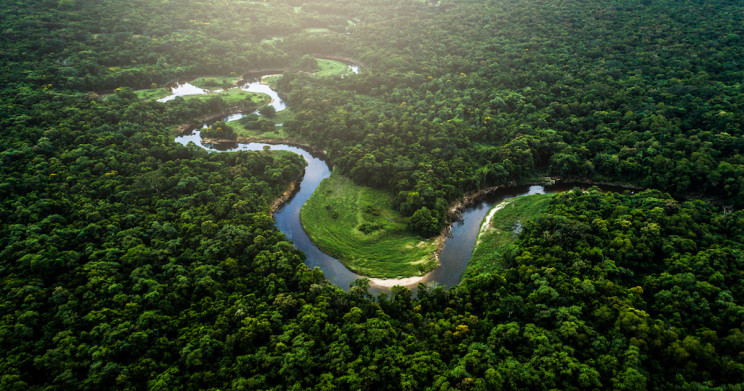Certain areas of lowland rainforest, vital to sequestering carbon dioxide in the Amazon and mitigating the effects of climate change, may gradually turn into arid grassy savannas, according to a Rutgers-led study.
Research published in a scientific journal Proceedings of the National Academy of SciencesShe sheds light on how alternating wet-phase floods and dry-phase droughts, called ‘dual stresses’, can limit forest formation and support short-lived grass species.
“As future climate projections point to a drier climate in the tropics, knowing where and how today’s forests will turn into savannas will help us predict how the carbon cycle may change as warming increases,” said Kaio Mattos, lead author of the study, as a PhD candidate. in the Rutgers School of Arts and Sciences, Department of Earth and Planetary Sciences. “We have shown that some areas of the Amazon rainforest that were previously thought to be protected would be at risk of transitioning to a savanna-like state.”
According to the National Oceanic and Atmospheric Administration (NOAA), the Amazon region stores about 123 billion tons of carbon above and below ground, helping to stabilize the global climate. The loss of trees due to a process the study calls “wildification” means this could affect the Amazon’s ability to store carbon.
The findings help explain why forests and savannas can coexist in the same climate today, when forests occupy constantly flooded areas, such as large swamp forests in the interior of the Amazon, or are constantly dry, such as well-drained upland forests.
This means that in a climate projected to be drier in the future, some of the permanently flooded plains of the Amazon will begin to “experience” a period of drought, exposing forests in the heart of the Amazon to double stress or savanna conditions.
“This work demonstrates the power of hydrology in explaining the structure and function of plant ecosystems,” said Ying Fan Reinfelder, professor in the Rutgers School of Arts and Sciences Department of Earth and Planetary Sciences and co-author of the study. . “We argue that global change research can benefit from a sharp focus on hydrological change.”
According to Reinfelder, these findings contradict the results of most studies on the future of the Amazon; this concludes that the conversion of forest to savanna will likely be confined to one region of the Amazon, the drier southern part.
A forest is defined as an area of land dominated by trees and characterized by a dense canopy. The savanna is a mixed forest-grassland system with trees spaced enough to allow sunlight to encourage grass growth.
Oceans and forests are two of the largest natural “sinks” or carbon sinks in the world. Trees extract carbon from the air during photosynthesis. Although savannas are vital sources of biodiversity, they store far less carbon per acre.
Scientists have known for decades that the edges of the Amazon are threatened by population pressure and deforestation caused by climate change. The study uncovered an understanding of the mechanism likely to affect the interior of the Amazon.
“We found that the flooding was significant,” said Mattos, who now holds a PhD at Princeton University. “In parts of the landscape, groundwater alternates between very shallow (choking tree roots) and very deep (depriving roots of water). Only savanna plant species can tolerate this double stress. Forests can only be found in stable upland that is never submerged, or at all times. They thrive when they are in a stable submerged plain.”
To reach these conclusions, scientists turned to the science of hydrology, which studies the properties of water on Earth on land. They used a complex computer model to simulate the water cycles of the Amazon region; essentially a set of equations representing various hydrological conditions, including river heights, soil moisture levels, and evaporation rates. They then run a computer model that uses climate forecasts 2090-2100 using data provided by IPCC scientists (the Hadley Center model) to map areas that could turn from permanent flooding to double stress.
A comparison between current representations of hydrological stress and its future simulations showed the effects on many ecologically critical areas. Floodplain forests in the interior of the Amazon region, such as the state of Amazonas, and along the Madeira and Upper Negro Rivers, considered among the world’s most biologically rich floodplain forests, are likely to be affected. Large peatlands in Peru, another region that absorbs carbon effectively, could also be altered, leading to decomposition and the consequent release of carbon dioxide into the atmosphere, accelerating warming. Source
Source: Port Altele
